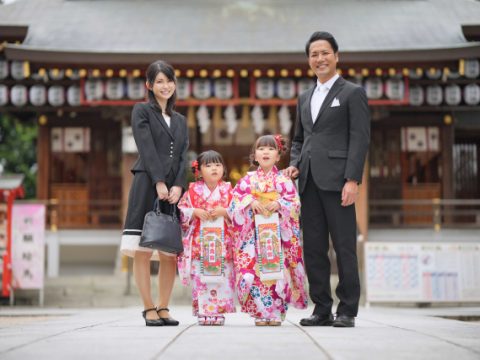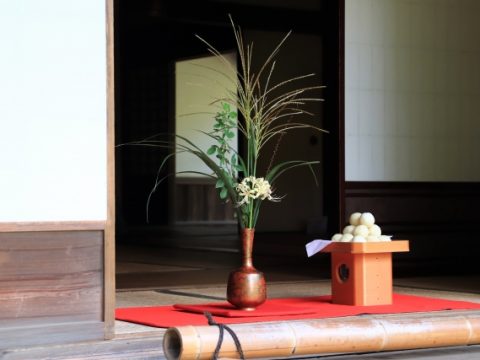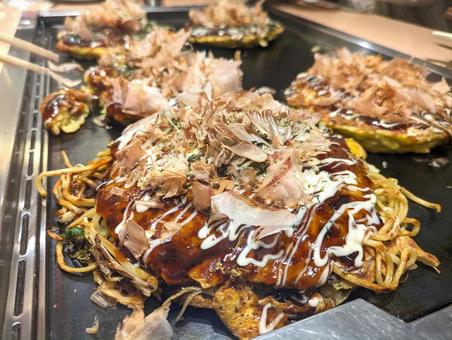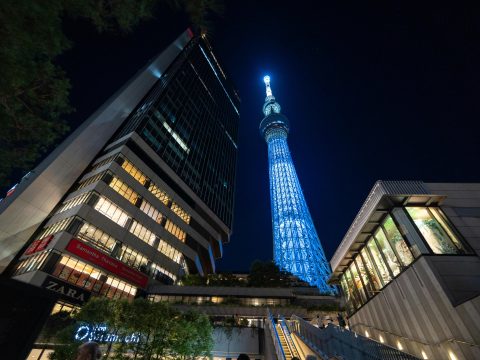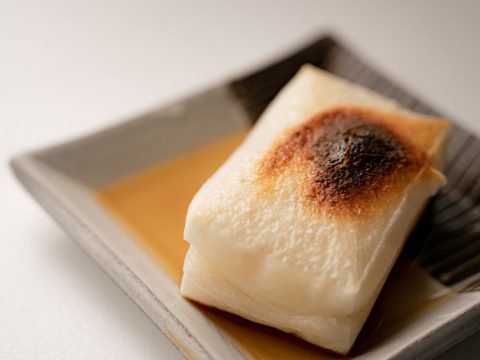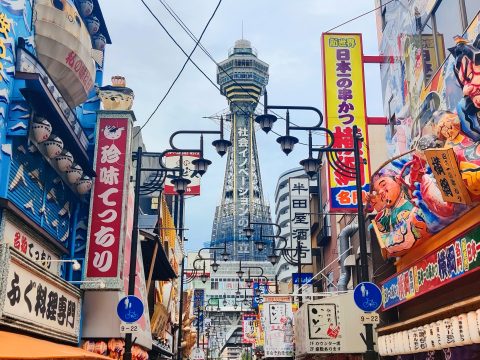Wasabi (わさび)
JAPANESE FOODS
25.06.2022
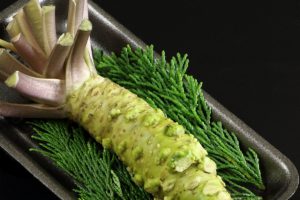
Sushi is one of the most famous and popular Japanese food. If you have had sushi before, you are also familiar with Wasabi: the spicy green paste which comes with sushi.
Wasabi is not just a condiment
Wasabi is an indigenous plant to Japan and has been used for at least a 1000 years. The oldest record found is a wooden label written as “Wasabi,” which was excavated from one of the historical sites in Nara prefecture. It indicates that Wasabi was already being stored and used in the Asuka period (592 A.D. – 710 A.D.). The record of Wasabi is also found in Japan’s oldest encyclopedia of medicinal herbs, which was written in 918 A.D. It was initially used as a medicine more than a condiment.

Why was Wasabi used as a medicine?
Now, you might wonder why Wasabi was used as a “medicinal herb”?
It was believed to have antibacterial and anti-inflammatory benefits. With modern research, the property called isothiocyanates (ITCs), which create the unique pungent flavor has been shown to have antibacterial effect against E-coli and Staphylococcus aureus. These are common bacteria that cause food poisoning. So it makes sense that Wasabi has been used as a condiment to eat raw fish: One reason is to eliminate the fishy smell, and the other is to prevent food poisoning.

But isn’t it amazing that people have known this, long before modern medicine is practiced? With more studies being done, Wasabi may have more health benefits like fat loss, anti-cancer properties, bone health, and brain health. Although the study on humans is lacking, so these are possible benefits that are not 100% proven.
How is Wasabi grown?
The natural habitat of the wasabi plant is in the mountains along streams. The plant requires very clean water with gentle water flow, specific temperatures (8°C – 20°C), and humidity in the shady area.

The first cultivation was started in the Keicho era (1596 – 1615) in the Utogi region in Shizuoka prefecture when the first shogun, Ieyasu Tokugawa, took a liking to Wasabi. Later on, the cultivation method was brought to the Izu peninsula, and a new method was established in the area. The method is still being used in the area. Recently the method has been recognized as Globally Important Agricultural Heritage System (GIAHS). For more information, click here.
The Wasabi we eat in this modern world is likely not real Wasabi!?
Since it requires a tremendous amount of time, skills, and labor to grow Wasabi, it is rare to come across real Wasabi. Even if you did, it is very expensive (1kg = 7,334 Yen as of April 2022). Fresh Wasabi also loses its flavor very quickly. The peak of the flavor is within 5 minutes after being grated. Therefore, the processed Wasabi we are used to eating is unfortunately not real Wasabi. Most Wasabi products are made with Western Wasabi, known as horseradish. Horseradish has the same kind of flavor and kick, but it is naturally white. It does not contain the same beneficial properties as mentioned above.

So if you are lucky enough to come across real fresh Wasabi, make sure to have a taste. I was told the aftertaste is also sweeter!

Eri Palmer
Eri grew up in Japan. She came to U.S. as an international student, and decided to stay in the country. Cooking is one of her passions, and she loves to cook Japanese food for her children.
Read previous articles by the writer
Read latest articles
KEYWORDS
- # PICKPICK
- # Resume
- # alcohol
- # Rice
- # Soup
- # winter food
- # Fast Food
- # seafood
- # spicy foods
- # raw food
- # fermented food
- # Transportation
- # MEAT
- # Edo culture
- # suits
- # clothing
- # drink
- # fish
- # seasoning
- # Japanese New Years Foods
- # Toshikoshi soba
- # Osechi Ryori
- # Ozoni
- # Christmas
- # Japanese fusion pasta
- # Wafu Pasta
- # Japanese Hot Pot
- # なべ
- # 鍋
- # Miyazaki
- # Chicken Nanban
- # Karamen
- # Autumn Wagashi
- # Mushi-yokan
- # Imo-yokan
- # Japanese Autumn Fruits
- # Autumn
- # Vending Machine
- # fall
- # dango
- # Chestnut rice
- # saury
- # Mushroom
- # Rice vinegar
- # Japanese condiments
- # 調味料
- # Sake
- # Mirin
- # Soy sauce
- # Japanese Noodles
- # Udon
- # Ramen
- # Yakisoba
- # Soba
- # Japanese Seaweed
- # 海藻
- # かいそう
- # Payslip
- # Training
- # Japanese summer foods
- # 和菓子
- # Wagashi
- # ryokucha
- # 夏
- # 飲み物
- # Ramune
- # ラムネ
- # Pokari Sweat
- # ポカリスエット
- # Calpis
- # カルピス
- # Mugicha
- # ume
- # 梅
- # うめ
- # umeshu
- # job hunting
- # tofu
- # Recruitment in Japan
- # miso
- # Japanese cuisine
- # Yellowtail and bonito
- # Children’s Day
- # Kashiwa Mochi
- # Chimaki
- # fruits
- # Kusamochi
- # Types of Agriculture in Japan
- # bread
- # パン
- # パン屋さん
- # japanese bread
- # shokupan
- # meal blead
- # anko bread
- # 桜
- # さくら
- # cherry blossom
- # visa
- # hanami
- # omotenashi
- # sakura
- # おもてなし
- # Japanese hospitality
- # oshibori
- # wet hand towel
- # hand towel
- # restaurant
- # Commuting in Japan
- # Women-only cars
- # Exit gate
- # japanese train
- # train
- # valentine
- # Japanese sweets
- # 朝食
- # Japanese Breakfast
- # Breakfast
- # Japanese
- # 日本
- # healthy
- # persimmons
- # hoshigaki
- # HR
- # work in Japan
- # jinji ido
- # corporate systems
- # Japanese work culture
- # bento
- # ekiben
- # shinkansen
- # omiyage
- # train station
- # Japanese culture
- # work culture
- # mentaiko
- # umeboshi
- # Japanese snacks
- # potato chips
- # Japanese potato chips
- # Japanese writing
- # seaweed
- # konbu
- # ocean foods
- # shio konbu
- # dashi
- # miso soup
- # food processing
- # pear
- # nashi
- # sweet potato
- # japanese sweet potato
- # stingray
- # satsuma imo
- # food value chain
- # homecooking
- # agriculture
- # Japanese homecooking
- # farming
- # nikujaga
- # shojin ryori
- # meat and potatoes
- # traditional foods
- # comfort food
- # buddhist food
- # manufacturing
- # factory
- # eihire
- # vegetarian
- # food and beverage
- # izakaya
- # yatai
- # japanese festival
- # taiyaki
- # matsuri
- # summer
- # Ikayaki
- # smart agriculture
- # shaved ice
- # kakigori
- # かき氷
- # summer dessert
- # Japan
- # Japanese foods
- # dessert
- # fruit
- # matcha
- # icecream
- # Pikcup
- # Pikc up
- # Pcikup
- # skilled labor visa
- # working visa japan
- # Dineer Table in Japan
- # Japanese manner
- # Japanese food
- # Japanese Table Manner
- # Chopsticks
- # Japanese traffic signs
- # traffic information
- # road rules in Japan
- # chocolate
- # green tea
- # Osaka
- # Work Japan
- # Japanese company
- # ikura
- # sushi
- # nigiri
- # wasabi
- # PCIK
- # PICK UP
- # PICK
- # PICKUP


